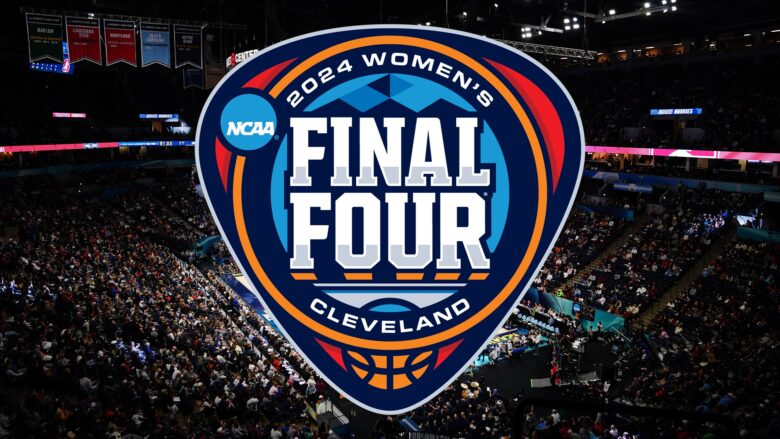Women’s March Madness 2024 Schedule
This is the schedule for the 2024 NCAA women’s basketball tournament for March Madness.
It begins with selections for the women’s tournament on Sunday, March 17.
- Selection Sunday: 8 p.m. ET Sunday, March 17 on ESPN
- First Four: March 20-21
- First round: March 22-23
- Second round: March 24-25
- Sweet 16: March 29-30
- Elite Eight: March 31-April 1
- Final Four: Friday, April 5 at 7:00 p.m., with the second semifinal starting 30 minutes after the first game ends.
- NCAA championship game: Sunday, April 7 at 3 p.m. ET on ABC, hosted at Rocket Mortgage FieldHouse in Cleveland, Ohio.
Betting Favorites: Gamecocks (-115)
The South Carolina Gamecocks are dominant in women’s college basketball this season with a perfect perfect 32-0 record.
Las Vegas bookmakers are offering odds of -115 on the team to win the title this year. The minus sign (-) indicates that the team is considered the favorite by odds-makers and that that should you bet on the team – you would need to bet $115 to potentially win $100.
Women’s March Madness 2023 Recap
In the climactic showdown of the 2023 NCAA Division I women’s basketball championship, the LSU Tigers faced off against the Iowa Hawkeyes at the American Airlines Center in Dallas, Texas, on April 2, 2023.
In an historic display of skill, the LSU Tigers claimed their first-ever national championship with a convincing 102–85 victory against the Hawkeyes.
This landmark win also set a new record for the highest points ever scored in the finals of the women’s NCAA championship.
Angel Reese, a standout player from LSU, not only secured a double-double during the game but also was honored with the Most Outstanding Player award due to her exceptional performance.
The triumph marked a significant milestone for LSU, granting them their inaugural title in women’s basketball and giving Kim Mulkey, the head coach, her fourth national championship. The excitement following the win spilled over into Baton Rouge, where a celebratory parade was held, and the team was later honored with an invitation to the White House.
Furthermore, the championship game broke viewership records, drawing an audience of 9.9 million, thereby becoming the most-watched women’s college basketball game in history. It also set records for the highest viewership of any college sporting event broadcasted on ESPN+ and experienced a notable surge in viewership compared to the championship game of the previous year.
Evolution of Women’s March Madness
Initially, the AIAW Women’s Basketball Tournament, established by the Association for Intercollegiate Athletics for Women (AIAW), led the charge from 1972 until 1982. However, the landscape of women’s collegiate basketball underwent a significant shift in the 1981-82 academic year when the NCAA expanded its championship offerings to include women’s basketball among twelve other sports. This expansion initiated a power tussle over the control of women’s college sports, previously dominated by the AIAW.
The history of Women’s March Madness is marked by this transition. Despite the AIAW’s attempts to maintain its championship events, the NCAA eventually became the definitive authority in women’s collegiate sports, leading to the dissolution of the AIAW.
Throughout the years, the women’s tournament has experienced a surge in popularity and attendance, particularly from 2003 to 2016. This period saw a strategic scheduling move, placing the women’s championship game on the Tuesday immediately following the men’s Monday final, which contributed to increased visibility.
Historically, the women’s tournament faced challenges in achieving the same level of attention and financial support as its male counterpart. However, significant progress was made following a gender equality review in 2021. In response to the findings, the NCAA expanded the women’s tournament format to include 68 teams, mirroring the men’s structure, and officially incorporated the “March Madness” branding for the women’s events.
Despite these advancements, the women’s tournament continues to face disparities, particularly in the realms of broadcast rights and sponsorships, predominantly managed by ESPN and CBS. These disparities highlight the ongoing challenges in achieving full equity between men’s and women’s collegiate sports.

